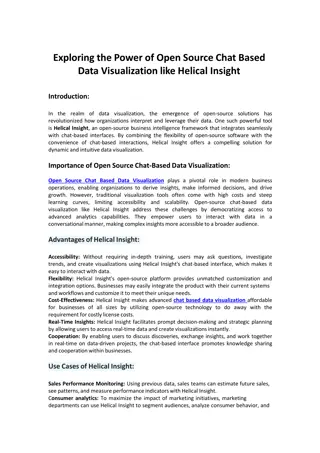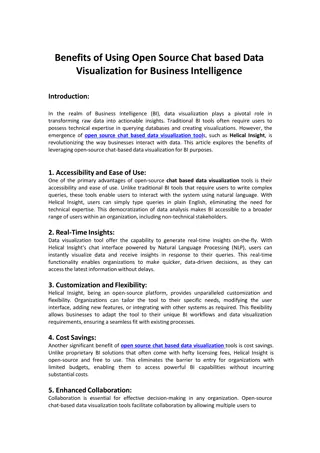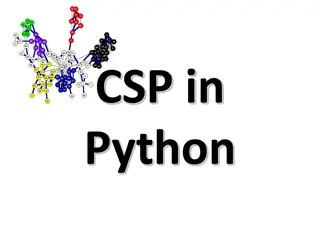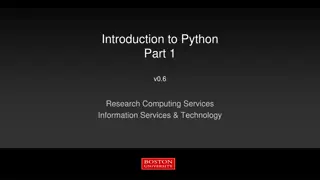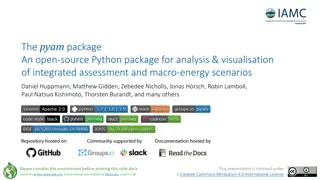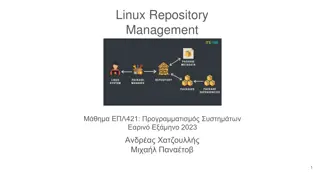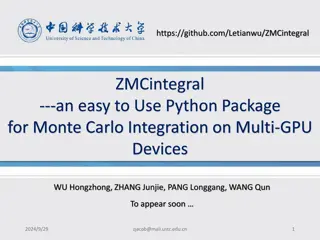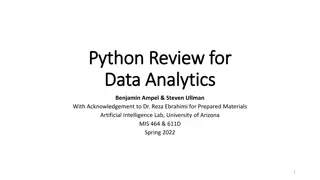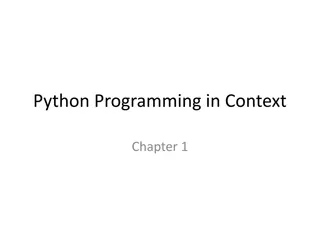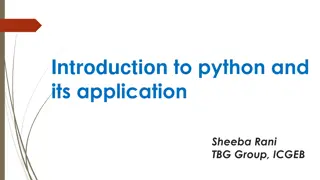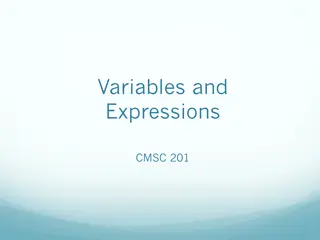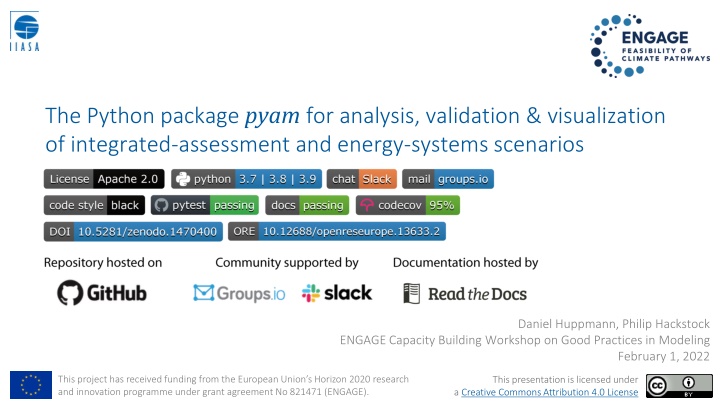
Introduction to Python Package Pyam for Scenario Analysis & Data Visualization
This project introduces the Python package Pyam, designed for analysis, validation, and visualization of integrated assessment and energy systems scenarios. It provides model-independent methods for efficient scenario analysis and data visualization, aiming to improve best practices and enhance reproducibility in scientific research.
Download Presentation

Please find below an Image/Link to download the presentation.
The content on the website is provided AS IS for your information and personal use only. It may not be sold, licensed, or shared on other websites without obtaining consent from the author. If you encounter any issues during the download, it is possible that the publisher has removed the file from their server.
You are allowed to download the files provided on this website for personal or commercial use, subject to the condition that they are used lawfully. All files are the property of their respective owners.
The content on the website is provided AS IS for your information and personal use only. It may not be sold, licensed, or shared on other websites without obtaining consent from the author.
E N D
Presentation Transcript
The Python package pyam for analysis, validation & visualization of integrated-assessment and energy-systems scenarios Daniel Huppmann, Philip Hackstock ENGAGE Capacity Building Workshop on Good Practices in Modeling February 1, 2022 This project has received funding from the European Union s Horizon 2020 research and innovation programme under grant agreement No 821471 (ENGAGE). This presentation is licensed under Creative Commons Attribution 4.0 License a Creative Commons Attribution 4.0 License
Part 1 Introduction & motivation
Introduction: From model results to scenario analysis There are many solutions and tools for scenario analysis & data visualization, but most are tools either hard-wired to a modelling framework or general purpose Reference data General-purpose packages for data visualization Model Integrated assessment models, energy systems, power sector, land use (change), other sectors e.g., matplotlib, seaborn, ggplot & shiny Processing of model outputs Data processing and analysis tools hard-wired to a specific framework General-purpose packages for data manipulation Validation of scenario results e.g., TIMES-VEDA, OSeMOSYS, MESSAGEix, REMIND, GCAM, mimi.jl, TEMOA, pypsa, PLEXOS, e.g., numpy, pandas & tidyverse Evaluation, analysis and visualization Results, insights and scientific publications 3
Better-practices for scripts for scenario analysis and data visualization Many modelling frameworks adopt best-practice of collaborative development , but scripts for scenario analysis are often written in an ad-hoc fashion A common approach to scenario analysis & data visualization Write a few lines of code for a simple feature a few features and a little bit more Caveats of this incremental approach (not always, but way too often) copy-paste of large snippets of code from one project to the next No version management for the analysis scripts Insufficient documentation of code No testing, no continuous-integration-strategy Why is this a problem for open & reproducible science? Limited reproducibility or transparency of the results Risk of errors or bugs in existing features during further development Risk of errors or bugs due to dependency updates 4
Our vision: a community Python toolbox for energy & climate research The pyam package offers a suite of model-independent methods to streamline the processing, analysis & visualization of scenario results Design principles: Harmonized data structure and formats Model-independent standardized methods for scenario analysis & visualization Modular package architecture and simple integration in other packages & workflows Advantages for modellers and analysts Standardized interface following the pandas & matplotlib packages Comprehensive documentation, tutorials, email list, Slack workspace, High-performance implementation as pandas.Series statt pandas.DataFrame Increased transparency & better intelligibility through shorter analysis scripts Higher reliability thanks to a well-testing package with a continuous-integration-strategy 5
Part 2 The pyam package 6
Supported data models and file formats The package supports various formats & types of timeseries data and is currently used by more than a dozen modelling teams Supported timeseries data formats: The pyam package was initially developed to work with the IAMC template, a tabular format for yearly timeseries data But the package also supports sub-annual time resolution Continuous-time formats (e.g., hourly timeseries data) Representative sub-annual timeslices (e.g., winter-night ) Compatible i/o and file formats: Full integration with the pandas data analysis package Tabular data(xlsx, csv)& frictionless datapackage format 7
The pyam package for integrated assessment & macro-energy modelling A community package for scenario processing, analysis & visualization following best practice of collaborative scientific software development Use cases and features Data processing Data i/o & file format conversion, aggregation, downscaling, unit conversion, Validation Checks for completeness of data, internal/external consistency, numerical plausibility Analysis & visualization Categorization and statistics of scenario ensembles, plotting library, D. Huppmann, M. Gidden, et al. (2021). Open Research Europe 1 1:74. doi: 10.12688/openreseurope.13633.2 #pyam_iamc #pyam_iamc pyam-iamc.readthedocs.io 8
Developing a community for a community package We made an effort to make the pyam package usable for modellers & analysts with a wide range of experience levels and scientific backgrounds Simple installation Available via the common Python managers pypi and conda Open-access manuscript & comprehensive documentation Several tutorials and full-fledged API documentation For novice users or moderate-interest users: An email list for announcements of new releases and questions For users interested in frequent updates, tips-and-tricks and more interaction A Slack workspace with a #helpdesk #helpdesk channel For expert users and anyone interested in contributing The GitHub repo for collaborative scientific software development like issues and pull requests, continuous-integration workflows, release management, etc. 9
Part 3 A live demo & interactive discussion See the open-source notebook at https://github.com/danielhuppmann/ENGAGE-pyam-tutorial 10
Thank you very much for your attention! Dr. Daniel Huppmann Research Scholar Energy, Climate, and Environment Program (ECE) International Institute for Applied Systems Analysis (IIASA) Schlossplatz 1, A-2361 Laxenburg, Austria huppmann@iiasa.ac.at huppmann@iiasa.ac.at @daniel_huppmann www.iiasa.ac.at/staff/huppmann @daniel_huppmann www.iiasa.ac.at/staff/huppmann This presentation is licensed under Creative Commons Attribution 4.0 International License a Creative Commons Attribution 4.0 International License


